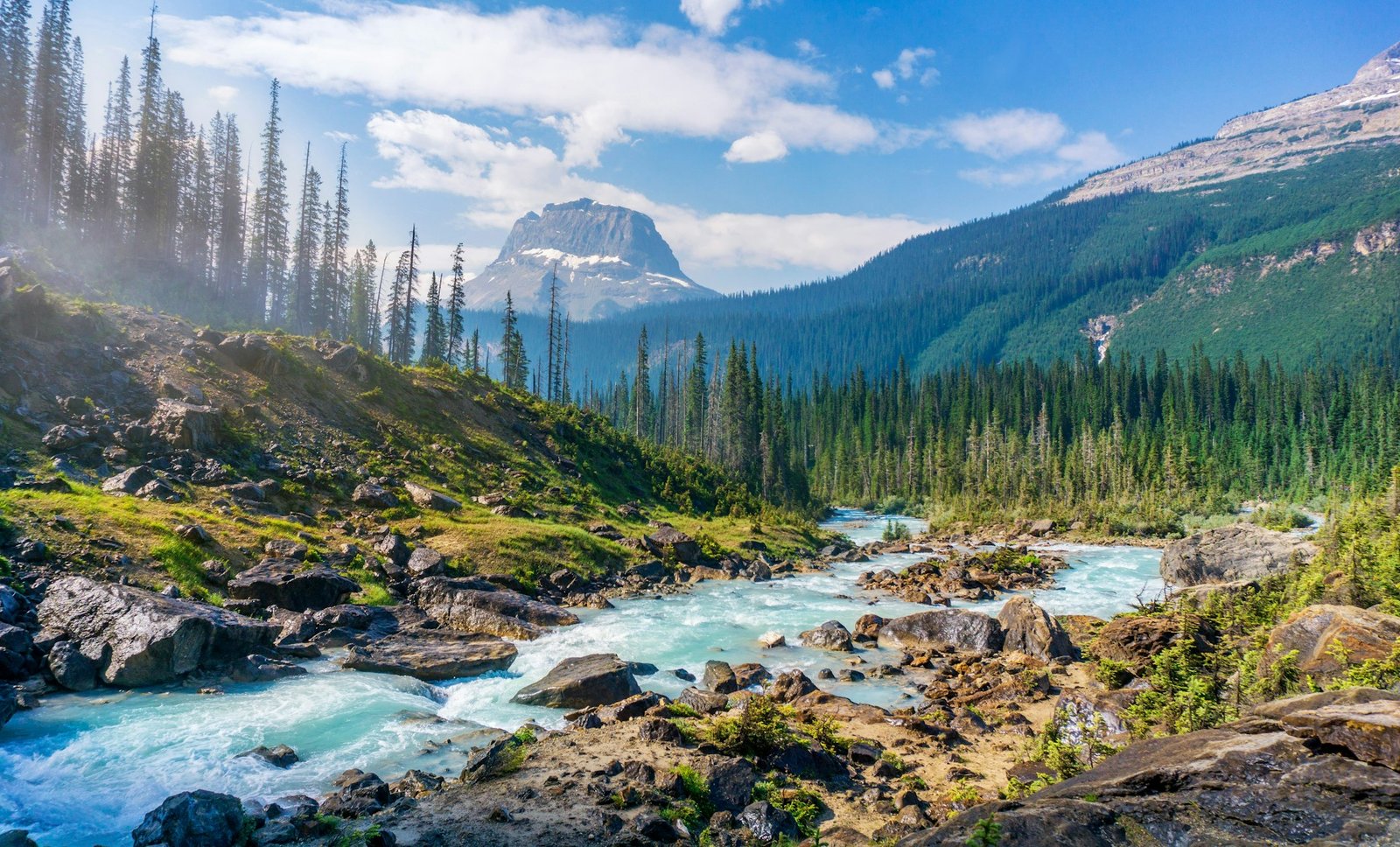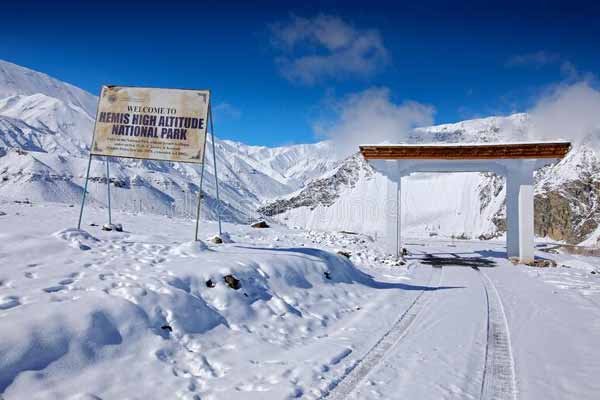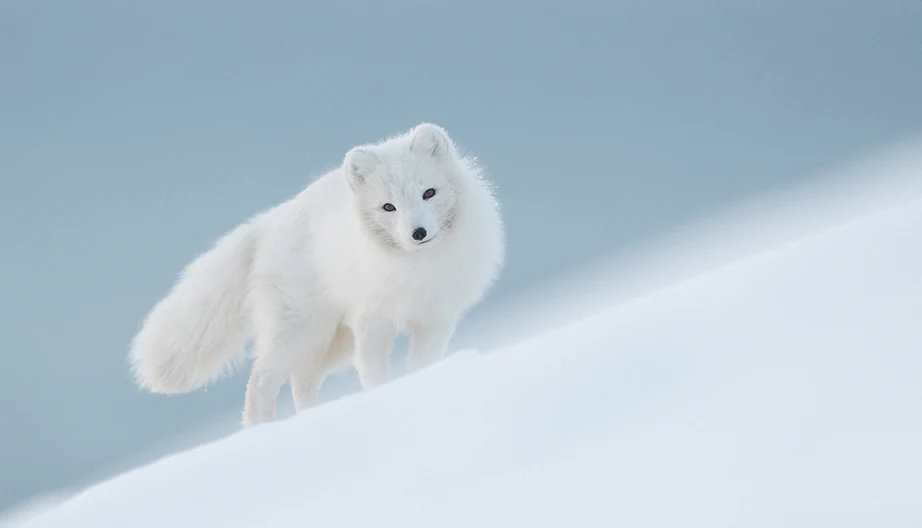What is the main animal of Hemis National Park?
Hemis National Park is the highest-altitude national park in the eastern Ladakh region of Jammu and Kashmir, India. It is the only national park in India north of the Himalayas. Hemis is India’s largest notified protected area and the second largest protected area after the Nanda Devi Biosphere Reserve and surrounding protected areas. The national park is known for several rare mammal species including snow leopards.
In 1981, this park was spread over just 600 square km, which increased to 3,350 square km in 1988 and 4,400 square km in 1990. Currently, it is one of the largest national parks in South Asia.
Variety of trees and plants in Hemis National Park
Pine, grasslands and small bushes surround Hemis National Park. Dry forests are also present here due to less rainfall. Veronica, Kobresia, Carex, Gentiana and many such trees and plants are present here. Apart from these, 15 different types of endangered medicinal plants are also found here.
Fauna in Hemis National Park
There are more than 200 snow leopards in Hemis National Park. Apart from these, Tibetan wolves, red foxes, Eurasian brown bears, Himalayan rats, marmots and many other animals are also found. 16 species of mammals and about 73 species of birds can be seen here. Golden Eagle, Himalayan Griffon Vulture, Robin Accentor, Chukar, Black black-winged snowfinch, and Himalayan Snowcock can be easily seen. There are also many small villages inside the park.
Hemis National Park or ( Hemis High Altitude National Park ) is a national park located at a high altitude in the eastern part of the Union Territory of Ladakh, India. It is the only national park north of the Himalayas in India, the largest notified protected area in India (and thus the largest national park in India) and the second largest contiguous protected area after the Nanda Devi Biosphere Reserve and surrounding protected areas. The park is also home to several endangered mammal species, including the snow leopard.

Floras in Hemis National Park.
If we talk about flora, many species of alpine plants are found here, some of the major ones are as follows – Anemone, Gentiana, Thalictrum, Lloydia, Veronica, Delphinium, Carex and Kobresia. According to a study, about 15 rare and endangered medicinal plants have been reported in this park, which include Hyoscyamus niger, Arnebia euchroma, Artemisia maritima, Ferula jaschkeana, Ephedra gerardiana, Bergenia strachii and Acantholimon lycopodioides.
The best time to visit Hemis National Park
If you want to visit here, then avoid planning to go here during winter because this park is not open for visitors in winter. The reason for this is that it is very cold here during this period. You can come here during the monsoon months (May to October).
Hemis National Park is home to 200 snow leopards.
Hemis National Park is the only national park in India north of the Himalayas which is spread over an area of about 4400 square kilometres. This national park is the largest national park in South Asia which is located in the eastern part of Ladakh. Hemis National Park is a national park located at the highest altitude in India. This national park is named after the famous Hemis Monastery. Indus River flows to the north of this national park. This national park is the second largest biosphere reserve after Nanda Devi Biosphere Reserve. The reason for the fame of this national park is the snow leopard living here. About 1600 people live in this national park.
Our misfortune with Chadar Trek:
Not everyone travels to Leh in the shivering winter of January. This snowy desert of Ladakh is bustling with tourists in the summer season, but very few people come here in winter. It is the thrill of trekking on the frozen Zanskar river in the shivering winter season that attracts hundreds of people from all over the world and they reach Leh. If you want to go on Chadar Trek, then there is no other option to go to Leh except in January. The purpose of our Leh trip in those winter months of January was also the same.
Unfortunately, just a few days before we departed from Delhi, the situation in Zanskar Valley of Ladakh changed so rapidly that our entire plan for Chadar Trek was ruined. A huge landslide in Zanskar Valley blocked the flow of the river and as a result, a lake was formed due to the accumulation of river water in a limited area. The stoppage of river flow created a serious problem there, as the bank of the lake could break at any time. This situation was very dangerous for the trekkers on Chadar as well as for the people living in the lower areas. Finally, the district administration assessed the danger and postponed the Chadar Trek indefinitely.
Valley of Flowers: A Paradise on The Earth.
Starting Trekking: There are many routes for trekking in Markha Valley, which you can choose according to your convenience and time. If you have less time (4-5 days), you can go to Skiu village by car from Chilling and start trekking from there. In the second option, Zingchen village can also be reached by car. We had a lot of time (8-9 days), so we decided to start the trek from Spituk village located near Leh airport. It was good that we started the trek from Spituk, otherwise, if we started the trek from Zingchen, we would have been caught on the first or second day due to lack of permit. By starting the trek from Spituk, we got a chance to spend at least 4 nights in the park.
Internal link – bilaar









